Trusts have a long tradition as asset-holding vehicles in wealth management and have served many families to preserve, protect, and transfer their wealth. Whenever wealth owners want to ensure wealth continuity over generations, they will likely consider a trust and its benefits an option.
While trust laws do not tend to change substantially over time, in recent years, we have witnessed a crucial evolution with the ongoing adoption of digital assets in wealth management. Retaining digital assets comes with specific challenges in ownership structuring, management, custody, and transfer during and after the owner’s lifetime.
Thus, the question arises whether traditional estate and wealth planning tools are still suited to carry out the wishes of wealth owners allocated to digital assets. But also, the wealth management industry is confronted with new client demands and can’t afford to stand still when it comes to offering services and solutions for rapidly evolving asset classes.
| AN OVERVIEW OF TRUSTS
Within the United States and many common law countries, trusts are among the most commonly used vehicles for holding and managing personal wealth. Unlike limited liability companies, foundations, or other legal entities, a “trust” is not a corporate entity. In simplest terms, a trust is a formalized relationship among various parties:
➊ The Settlor, or the creator of the trust whose objectives are expressed in a trust agreement.
➋ The Trustee, the fiduciary charged with executing the Settlor’s objectives consistent with the terms of the trust instrument and with the laws of the jurisdiction governing the administration of the trust agreement.
➌ The Beneficiaries, the individuals or other objects that will receive certain benefits from the trust agreement over time.
Although many jurisdictions recognize purely verbal trusts, most long-term trust relationships are memorialized by a formal writing, referred to as the trust instrument or trust agreement. Jurisdictional formalities in executing a written trust agreement often apply to ensure the trust is valid and enforceable. Those formalities, along with the level of detail in the trust instrument help to ensure the trust is administered privately, free from judicial or other administrative oversight.
Because they are inherently private arrangements, trusts are typically not formed by filing records with a registrar or court (although a small minority of jurisdictions do require court registration). Many affluent individuals and families value this feature, as it helps assure efficient management of family wealth in structures that keep private matters away from prying eyes of curiosity seekers, media, bureaucrats, or others who may seek to exploit personal financial information.

Trusts take many different forms. The most basic form, exceedingly common in the United States, is the revocable trust – often referred to as a revocable “living” trust. These devices are used for two essential functions:
➊ Avoiding court-administered conservatorship proceedings for an incapacitated person and probate proceedings for a deceased person, provided the person’s titled assets are formally titled in the name of the trustee of the trust.
➋ Providing long-term inheritance preservation for a deceased settlor’s surviving spouse or other beneficiaries in a framework that provides exceptional protection from beneficiaries’ creditors and maintaining long-term privacy and administrative efficiency over time.
Importantly, revocable trusts provide no meaningful asset protection for the settlor during the settlor’s lifetime. The settlor’s retained power to revoke the trust agreement and reclaim all trust assets means that if compelled by a creditor’s judgment, the settlor could be forced to end the trust and use the trust’s assets to satisfy that judgment.
Most wealth planning-oriented trusts are established as irrevocable trusts at inception. An irrevocable trust is a trust agreement established by a settlor under terms that the settlor may not unilaterally modify or revoke. While the universe of irrevocable trust strategies is seemingly infinite, irrevocable trusts in the U.S. can be arranged into a few broad categories:
Lifetime or Testamentary trusts
Very simply, a “lifetime” (also referred to as “inter vivos,” meaning “during life”) trust is a trust a settlor establishes while he or she is still living. A “testamentary” trust is a trust that becomes effective after the settlor’s death. By design, a revocable trust becomes an irrevocable trust when the settlor becomes incapacitated or dies because only the settlor held the power to revoke the trust. A testamentary trust may be also established by a testator’s will directing a court to establish a trust according to the will’s terms through the probate administration process.
"Most wealth planning-oriented trusts are established as irrevocable trusts at inception. An irrevocable trust is a trust agreement established by a settlor under terms that the settlor may not unilaterally modify or revoke"

“Self-settled” or “third-party” “spendthrift” trusts
One of the key benefits available to trust planning is the ability to safeguard trust assets from mismanagement by immature or unprepared beneficiaries and/or to prevent a future creditor from reaching into the trust’s assets to satisfy a claim against a trust beneficiary. The term “spendthrift” is commonly applied to describe a trust that provides such safeguards.
A “self-settled” spendthrift trust is a form of irrevocable trust established by the settlor in which the settlor may remain a beneficiary. Roughly one-third of states in the U.S. and several countries around the world specifically authorize this type of trust. Jurisdictions that do not recognize self-settled spendthrift trusts will allow a creditor to reach into the trust to satisfy a future claim. Fortunately, settlors living in jurisdictions that do not recognize self-settled spendthrift trusts may be able to establish such a protective trust by invoking the laws of a more favorable jurisdiction.
“Third-party” spendthrift trusts are established by the settlor for the benefit of beneficiaries other than the settlor. All trust jurisdictions recognize the protections of a third-party spendthrift trust to varying degrees. Perhaps unsurprisingly, jurisdictions that recognize the protections of a self-settled spendthrift trust are also the most favorable in administering third-party spendthrift trusts. While the protection of a beneficiary of a third-party spendthrift trust is not absolute, more favorable trust jurisdictions afford extremely high levels of privacy and protection for trusts established for a beneficiary from a third-party settlor.
“Grantor” or “non-grantor” trusts for U.S. income tax purposes
Irrevocable trusts may be structured so that the settlor is treated as the taxpayer for income tax purposes (the “grantor” for purposes of the U.S. income tax laws), or as a separate entity apart from the settlor (in the case of a “non-grantor” trust). Grantor trusts report income from the trust on the settlor’s individual income tax return, subject to the settlor’s applicable income tax rate. Non-grantor trusts report income on a separate return and are subject to the higher income tax brackets applicable to such trusts.

Although the settlor of a grantor trust may initially bristle at the prospect of bearing the income tax responsibility on assets the settlor has placed into an irrevocable trust, that income tax feature has some surprising benefits:
➊ In a completed gift trust the value of the trust assets will continue to grow without the erosion of annual income tax liability. Because the settlor is treated as the owner (“grantor”) for income tax purposes, the settlor’s payment of income tax liability is a personal obligation; income tax payments by the settlor are not treated as additional gifts to the trust.
➋ The settlor may engage in financial transactions with a grantor trust without adverse income tax consequences. The settlor may sell additional assets to the trust in exchange for a promissory note, borrow from the trust on favorable terms, and continue to allow trust assets to grow in a protected environment.
➌ Grantor trusts are more income tax efficient overall. Because the trust is taxable to the settlor, the trust effectively has the benefit of using the much broader individual income tax rates rather than the more compressed non-grantor trust rates.
➍ A “foreign” (non-U.S.) grantor trust may allow a non-U.S. person to acquire U.S. assets or invest in U.S. private markets without exposing the trust or settlor to U.S. taxes.
Non-grantor trusts are usually reserved for situations within the U.S. where a settlor seeks arbitrage between higher state-level income tax and lower federal-level income tax. A number of higher-tax states in the U.S. have enacted statutes curtailing the efficacy of non-grantor trusts.
"Crypto is steadily becoming a mainstream financial asset, evidenced by a growing number of ETFs and publicly traded companies involved in crypto markets. Like other assets, crypto must be carefully considered in an individual’s wealth and estate plan"

| A PRIMER ON DIGITAL ASSETS
When the Bitcoin network launched in January 2009 few individuals thought Bitcoin would become more than an experimental, decentralized peer-to-peer method of transacting via the internet. Today Bitcoin is the most valuable variant of a class of “crypto assets” with a cumulative market value in the trillions of dollars. Crypto is steadily becoming a mainstream financial asset, evidenced by a growing number of ETFs and publicly traded companies involved in crypto markets.
Like other assets, crypto must be carefully considered in an individual’s wealth and estate plan. To the extent an individual only owns interests in crypto exchange traded products, planning for those assets is no different than planning for any other custodial financial asset. But millions of individuals hold cryptoassets directly either on exchanges, with third party custodians, or in self-managed crypto “wallets.” Planning for directly-held crypto is much more complex than planning for other types of assets and the cost of “getting planning wrong” can be catastrophic.
Investors who keep cryptoassets on unregulated exchange platforms face the significant risk of losing access to their assets in the event of fraud, bankruptcy, or regulatory action against the exchange. Multibillion-dollar failures of MTGox, QuadrigaCX, Bitfinex, FTX, Celsius, and BlockFi are among the more egregious collapses of exchanges and inadequately regulated providers of financial services in crypto in recent years.
Investors who keep crypto in self-managed custody may struggle to adequately plan for the succession of their crypto wealth when the investor becomes incapacitated or dies. Forgotten passwords, lost wallets, lost private keys, and an incomplete succession plan commonly result in crypto wealth that is forever lost. The transfer of crypto from a self-managed wallet to a receiving beneficiary brings the risk of inadequate tax disclosure, for which penalties and interest may accrue indefinitely. Moreover, the “mechanical” transfer of crypto – or any asset of value – without meaningful guidelines for the receiving beneficiary does little to ensure that the beneficiary manages the asset properly over time.
Fortunately, a growing number of regulated, qualified custodians have been established in recent years that function much like a brokerage firm or private bank for crypto wealth. Reputable custodians are formed under the regulatory oversight of pragmatic jurisdictions such as Singapore, Switzerland, Canada, the UK, Liechtenstein – even the United States. These emerging financial providers lay the foundation for a more transparent, professional financial experience for crypto investors.
| THE IMPORTANCE OF THE LEGAL AND REGULATORY FRAMEWORK
Selecting the ideal trust type and jurisdiction is essential in wealth management and structuring. First and foremost, wealth owners want to ensure that trusts are recognized in the booking jurisdiction. Here, a jurisdiction with its own trust laws or a contracting party of the Hague Convention of 1 July 1985 on the Law Applicable to Trusts and their Recognition primarily addresses this issue.
The location where digital assets are kept in custody also holds significant importance. At this level, the legal and regulatory classification of digital assets substantially impacts how custody will be implemented and protected. Licensing requirements, regulatory oversight, and service providers' insurance coverage are decisive in this context. It’s further essential to consider potential bankruptcy scenarios of custodians and how deposited assets will be segregated. Again, certainty is critical.
| THE SWISS CRYPTO VALLEY VALUE PROPOSITION
In the Swiss region comprising the cities of Zurich and Zug, a vibrant digital ecosystem called Crypto Valley has become one of the leading players in the global blockchain industry that has expanded to other Swiss cantons and Liechtenstein. Since 2015, Zug has been home to the Ethereum Foundation, and other leading blockchain protocols and networks are headquartered in the area.
Switzerland is one of the most advanced financial centers in the blockchain sector, with over 1000 companies and over 5000 people active in blockchain-related entities in innovation-friendly framework conditions. In 2021, it became one of the first countries in the world to enact comprehensive legal regulations for blockchain technology for issuing, owning, and trading digital assets.
The combination of legal and regulatory clarity with institutional-grade custody and investment capabilities tackles specific risks such as loss of private keys and hacking correlated with digital assets.
| HOW TECHNOLOGY IS RESHAPING WEALTH MANAGEMENT
While the mainstream blockchain narrative is often about cryptocurrencies, tokenizing real-world assets is a hidden champion blockchain application with immense transformative potential. The following case study shows how digital and traditional assets merge in a modern wealth management framework to create value for wealth owners.
Tokenization of real-world assets
In its Tokenization of Real-World Assets Report, Roland Berger provides the following token definition: A token represents an asset in digital form, combined with information and assignable digital rights, all of which are connected in a programmable and automated manner. Tokens can represent either tangible physical or intangible assets embodying a share or the entire asset. The token on the blockchain stands for ownership of such an asset.
With tokens as a digital asset representation, various assets can be tokenized and traded on blockchains. This overcomes some of the typical restrictions of illiquid assets that may, for instance, not allow for fractional ownership and seamless transactions.
"In the Swiss region comprising the cities of Zurich and Zug, a vibrant digital ecosystem called Crypto Valley has become one of the leading players in the global blockchain industry... Since 2015, Zug has been home to the Ethereum Foundation, and other leading blockchain protocols and networks are headquartered in the area"

| THE ART AND COLLECTIBLES USE CASE
For wealth owners, alternative investments play an essential role in their strategic asset allocation.
Art and collectibles have conquered a special place within the asset class since passion can be combined with performance. With an estimated global sales volume of USD 67 billion in 2022, attractive returns, and younger collectors entering the market, financial motivations also continue to shape the asset class.
However, owning and transacting art and collectibles comes with specific pain points. Forgery is the most concrete threat; thus, obtaining authenticity certainty is central. Next to authenticity, the entire transaction history must be known and documented. Furthermore, legal questions regarding ownership may need to be clarified. All these requirements go hand in hand with substantial costs, effort, and documentation.
A token can be linked to the ownership of a specific physical artwork and represent an absolute right. In addition, the token can also function as a container of information to document authenticity in a tamper-proof manner. And finally, all transactions of the token are documented on the blockchain as an immutable distributed ledger.

Still, the digital and analog world may not always be synchronized. For instance, the token and possession must be passed to the purchaser to transfer ownership of the artwork. Here, licensed banks in Switzerland and Liechtenstein can assist in generating tokens and taking them into custody. Owners will then see their tokens as part of their portfolio statements with up-to-date evaluations, have access to individualized art lending solutions, and can perform art transactions on a highly secure banking platform from one client portfolio to another.
In Switzerland and Liechtenstein, free ports allow for tax-exempt storage as long as artworks remain within the free port. Token custodian banks collaborate with such specialized and secure storage facilities to ensure that the token and underlying value remain synchronized. Collectors may also appreciate the opportunity to fractionalize ownership with tokenization for transferring the co-ownership of their artworks to the next generation.
Next to a collaborative ecosystem of specialized service providers, a clear and reliable legal and regulatory framework is essential for successfully tokenizing artworks and collectibles.
| CONCLUSION
As wealth is increasingly digital and increasingly global, it is essential to carefully plan for emergent assets like crypto and other tokenized investments. A careful analysis should begin with "How" any asset is owned. Often, one or more trusts, foundations, or other structures is the appropriate method for owning assets of significant value. Sound structuring can provide privacy and tax efficiency and can go a long way toward ensuring that malefactors or a beneficiary’s poor decisions do not jeopardize family wealth.
"How" an asset is owned is inextricably connected with"Where" the asset should be managed and owned. Investors and families with wealth on a global scale should think broadly about the jurisdictions whose laws should govern the management of that wealth. Often, the most advantageous jurisdictions are not one’s own home country. No matter: savvy investors will seek solutions in jurisdictions that offer greater protections.
It is indeed essential to consider "What" assets one owns. Investors constantly seek assets that provide meaningful returns and/or express the investor’s objectives in global markets. But "What" assets to own should also be determined in the context of "How" and "Where" the asset is owned.

Markus Schwingshackl
Expert in financial product and digital assets regulation, Founder of Centro LAW.
centrolaw.ch

Matthew McClintock
Founder and Executive Managing Director, The Bespoke Group.
bespokegroup.io




